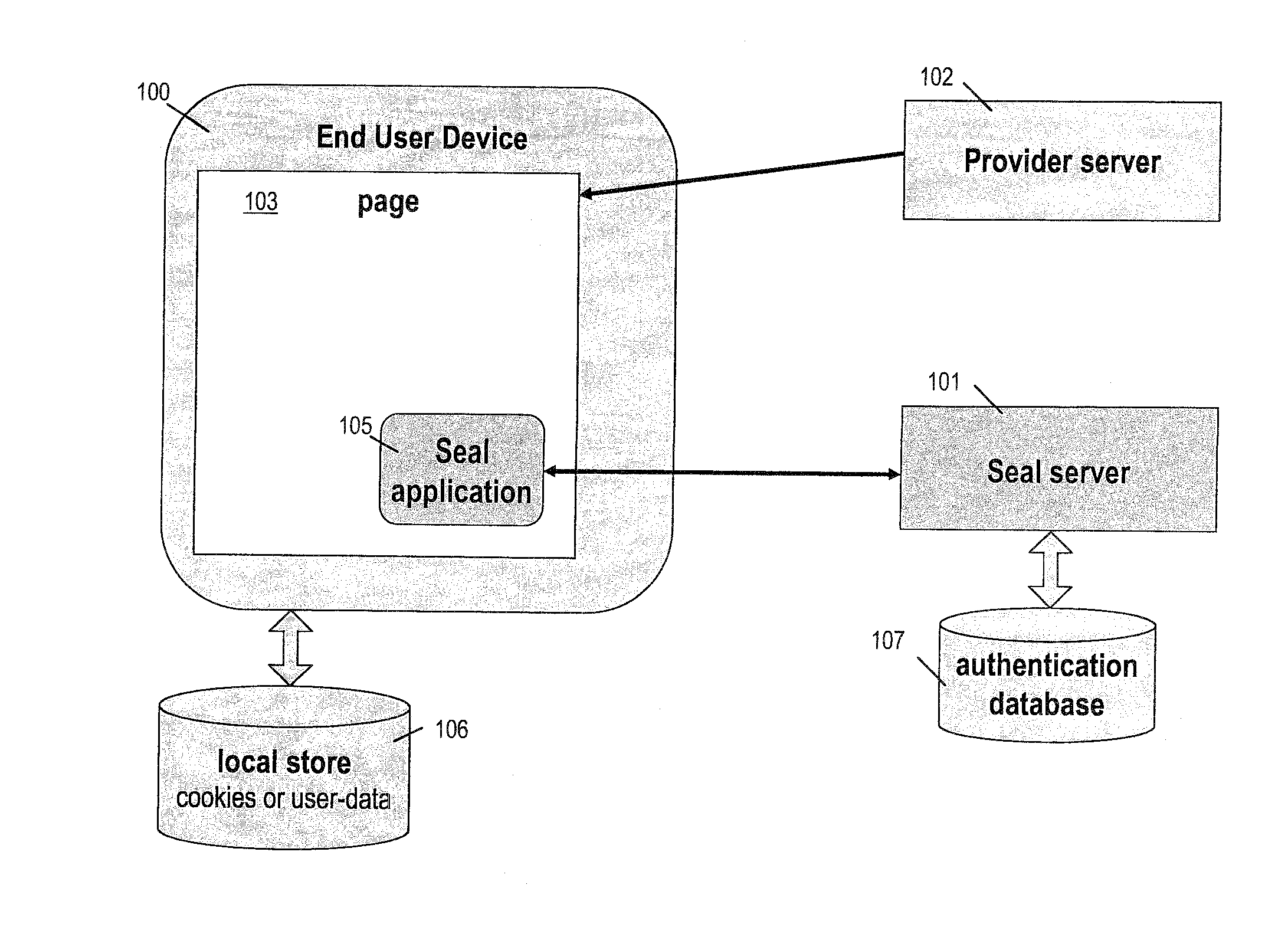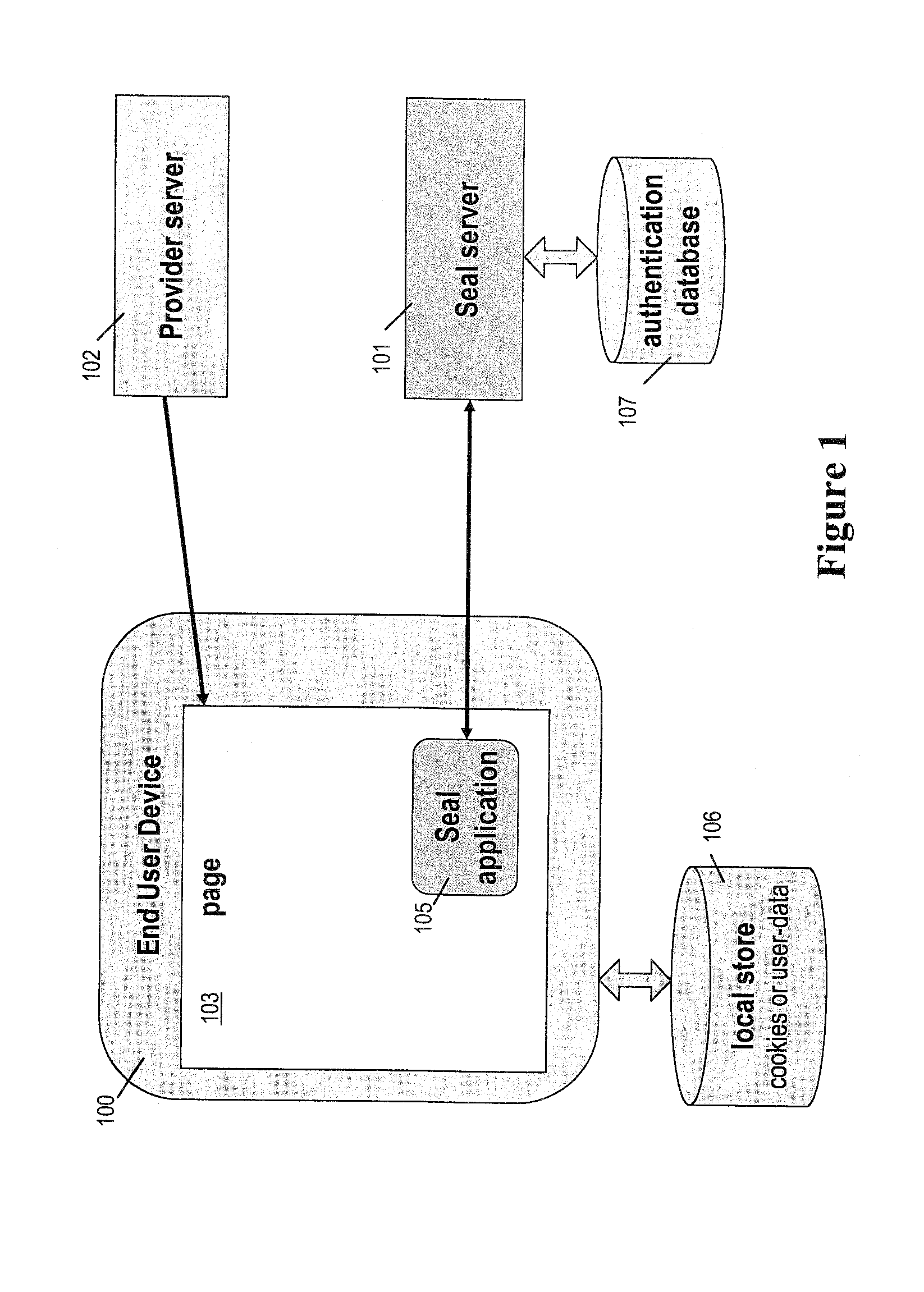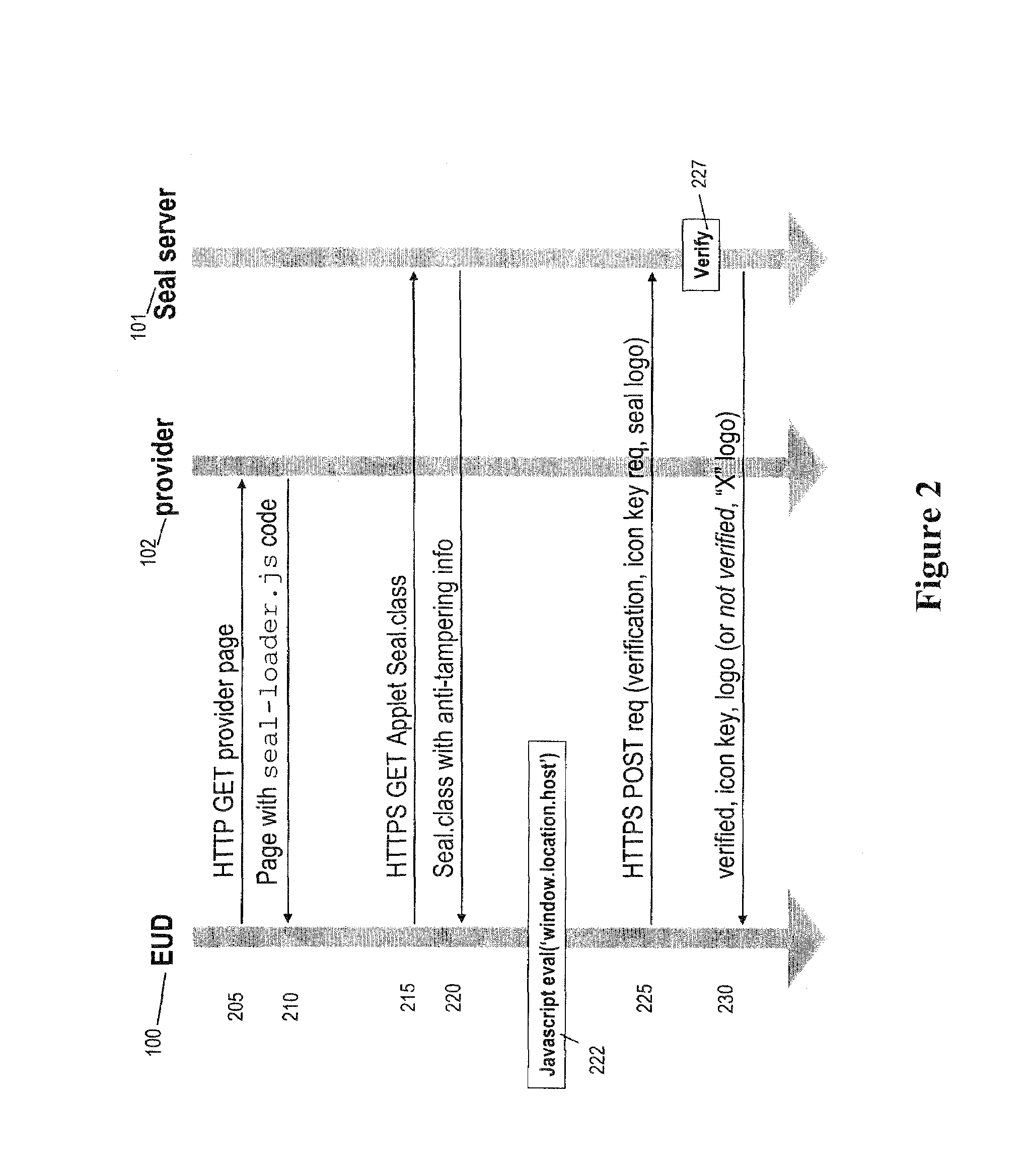System and method for verifying networked sites
a network site and network verification technology, applied in the field of network site verification system and method, can solve the problems of insufficient awareness or unwillingness of most users to make the effort to properly carry out the necessary manual steps, and users will fail to recogniz
- Summary
- Abstract
- Description
- Claims
- Application Information
AI Technical Summary
Benefits of technology
Problems solved by technology
Method used
Image
Examples
Embodiment Construction
[0031]In accordance with a preferred embodiment, FIG. 1 is a block diagram providing a general overview of a system for verifying the authenticity of network sites, in particular World Wide Web sites, using customized information recognizable to a user. As shown in FIG. 1, an end-user device 100 is configured to receive and display the content of a page 103 that is downloaded over a network from a networked site provider's server 102. As is well known, the network is typically the Internet, and server 102 is typically a Web server. Provider server 102 may be the Web server for a bank, e-commerce site, or other site intended to exchange confidential information with users. End-user device 100 is the combination of hardware and software used by a user to view network or Internet content, for instance a personal computer, mobile telephone, or other networked device running browser software such as Mozilla Firefox™.
[0032]As shown, part of the content of page 103 references a verificatio...
PUM
 Login to View More
Login to View More Abstract
Description
Claims
Application Information
 Login to View More
Login to View More - R&D
- Intellectual Property
- Life Sciences
- Materials
- Tech Scout
- Unparalleled Data Quality
- Higher Quality Content
- 60% Fewer Hallucinations
Browse by: Latest US Patents, China's latest patents, Technical Efficacy Thesaurus, Application Domain, Technology Topic, Popular Technical Reports.
© 2025 PatSnap. All rights reserved.Legal|Privacy policy|Modern Slavery Act Transparency Statement|Sitemap|About US| Contact US: help@patsnap.com



